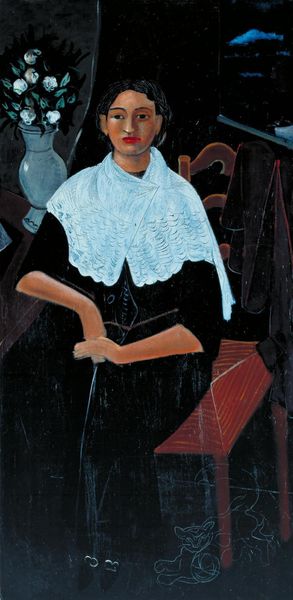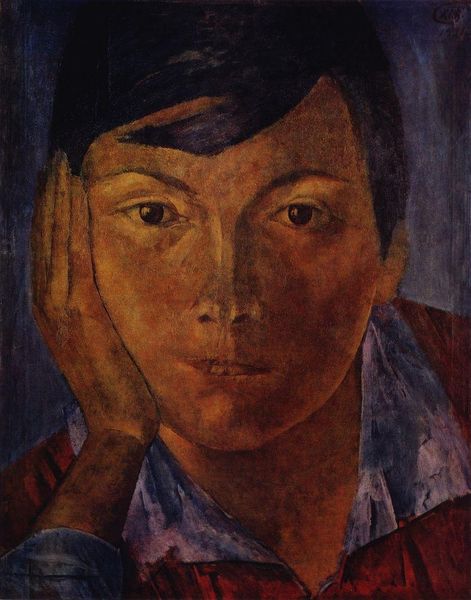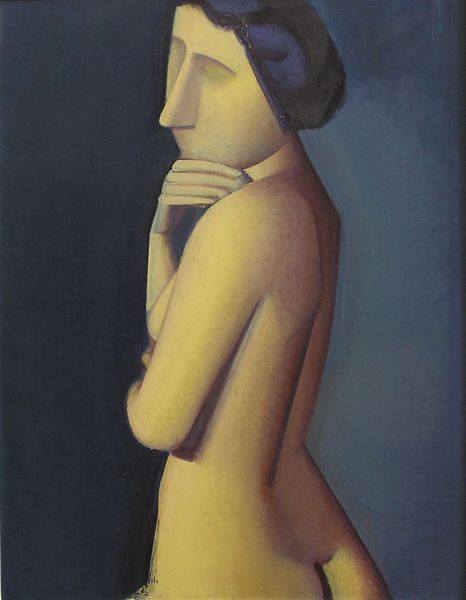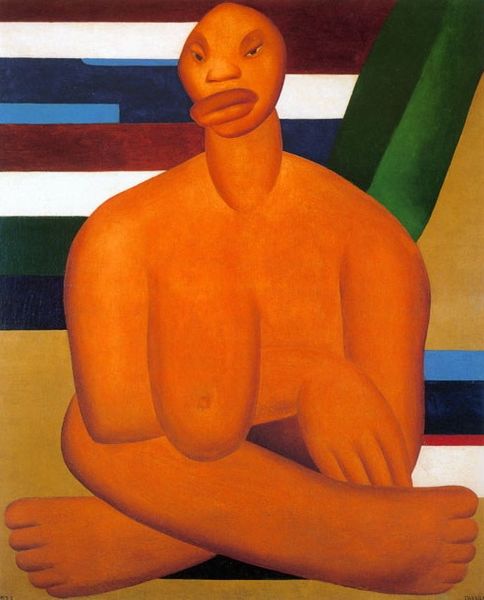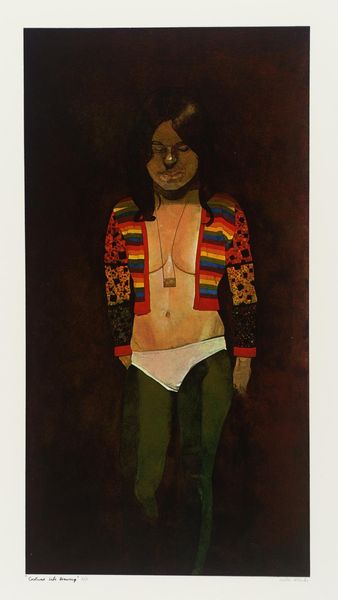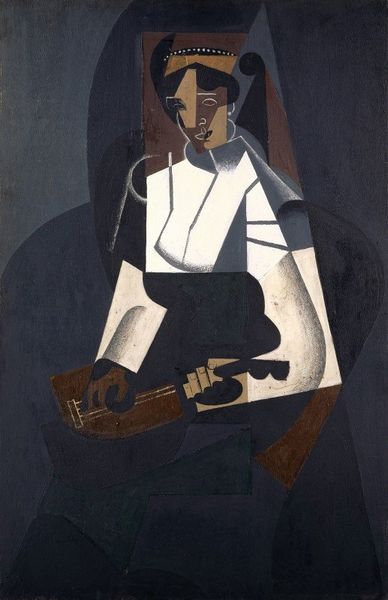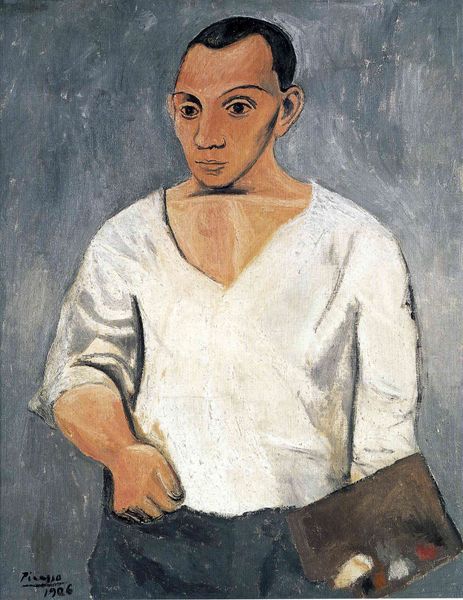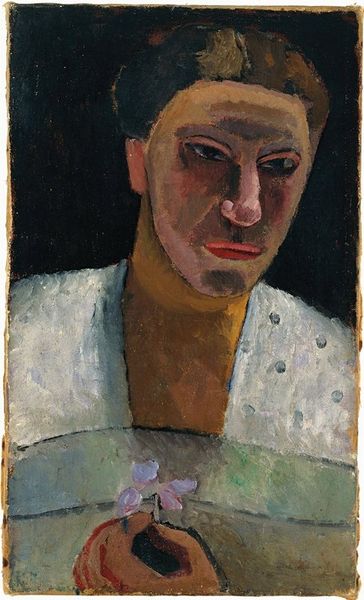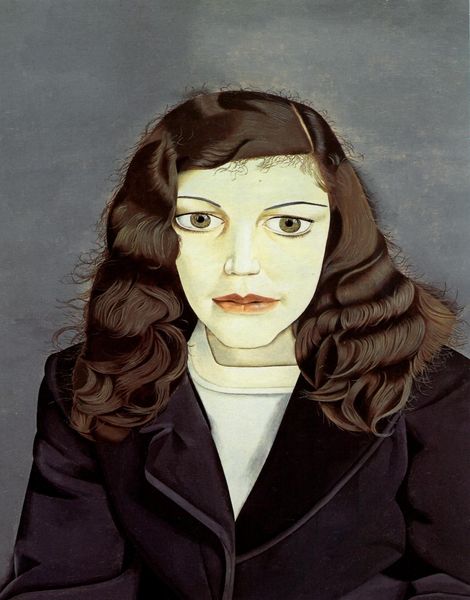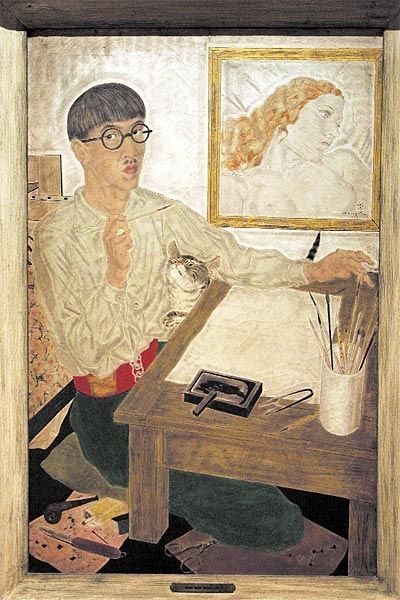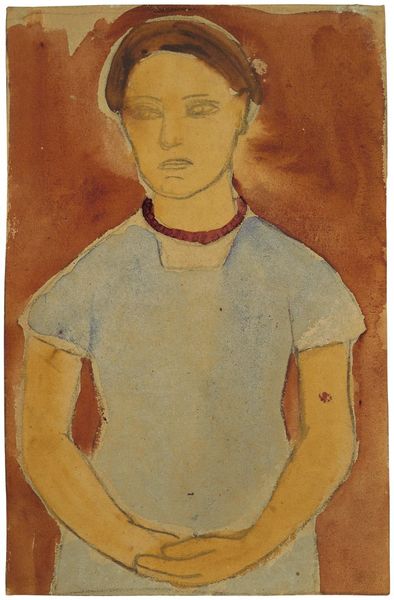
oil-paint
#
portrait
#
african-art
#
oil-paint
#
oil painting
#
genre-painting
#
portrait art
#
modernism
#
realism
Copyright: Public domain
Editor: We're looking at Horace Pippin's "The Artist's Wife" from 1936, an oil painting on canvas. There's something so straightforward and intimate about this portrait. How do you interpret the cultural context surrounding its creation? Curator: This work reflects a critical moment in the American art landscape, particularly regarding the representation of African Americans. Pippin, a self-taught artist, emerged during the period of increasing visibility and self-expression within the African American community during the interwar period. His lack of formal training is relevant here: consider how institutional barriers would've impacted his career, or even what kind of support networks he might have had. Why do you think Pippin chose this representational style? Editor: Perhaps it’s a move toward a more accessible representation, away from the high art circles that may not have been accessible to him. Was he deliberately choosing a “folk” style to express a particular identity or distance himself from academic art? Curator: That's insightful. Yes, and think about how Pippin's work intersects with broader narratives of American modernism. While abstract expressionism was gaining momentum, artists like Pippin focused on representing everyday life. We have to remember, institutions and patrons were much more willing to engage with European art. This work subtly asserts its place, claiming visibility and celebrating Black life within a complex societal structure. The flatness of form and direct gaze speak to an unfiltered truthfulness, almost a political statement. Editor: So, in a way, it’s a quiet rebellion, making a space that wasn’t necessarily there before. Curator: Precisely. It makes us consider not just the subject but who gets to create and circulate images in the art world and society more broadly. Editor: This has certainly given me a broader understanding. Thanks! Curator: My pleasure! It highlights how art can act as a vital cultural and political record.
Comments
No comments
Be the first to comment and join the conversation on the ultimate creative platform.
